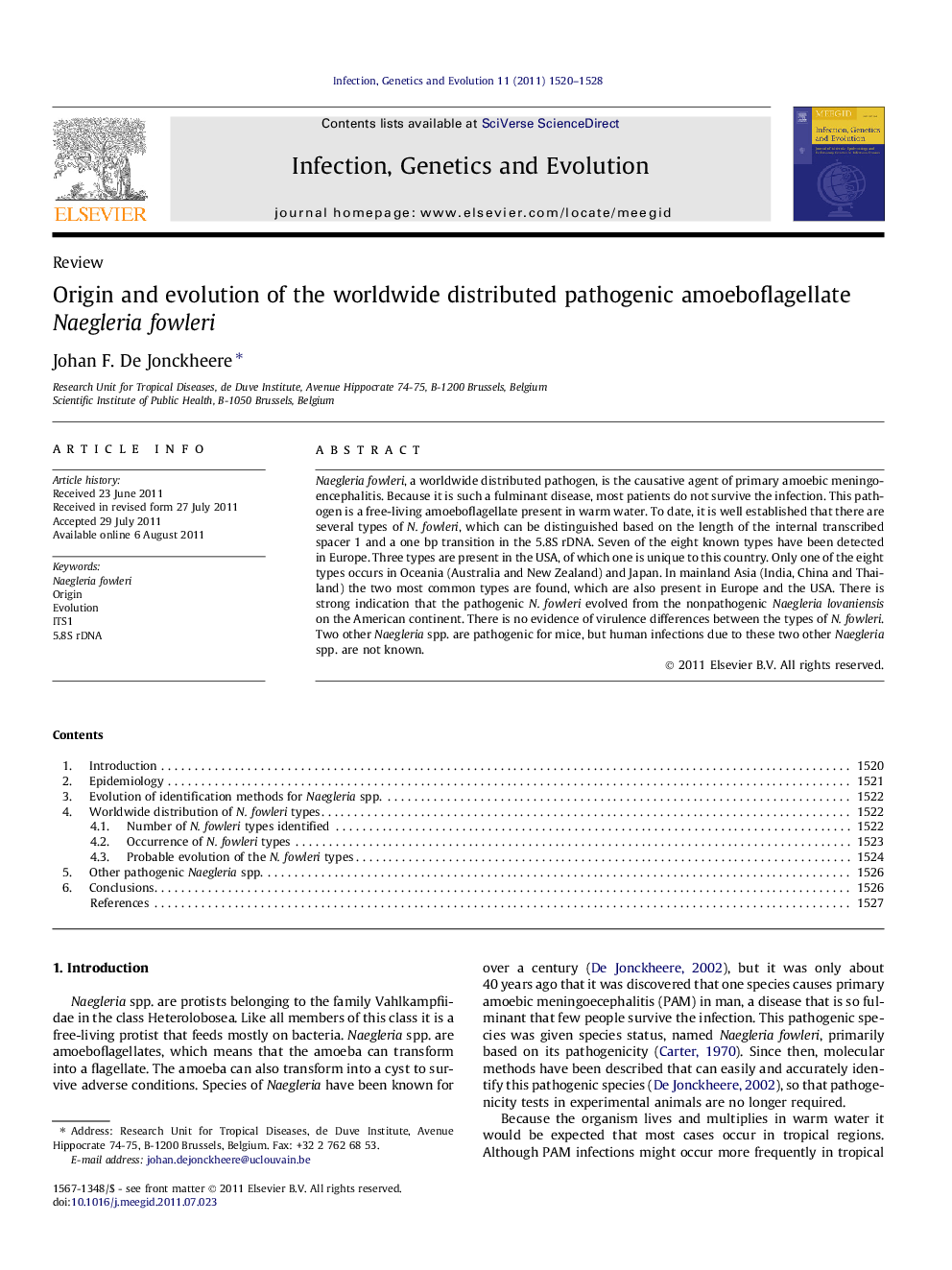| کد مقاله | کد نشریه | سال انتشار | مقاله انگلیسی | نسخه تمام متن |
|---|---|---|---|---|
| 5911549 | 1161367 | 2011 | 9 صفحه PDF | دانلود رایگان |

Naegleria fowleri, a worldwide distributed pathogen, is the causative agent of primary amoebic meningoencephalitis. Because it is such a fulminant disease, most patients do not survive the infection. This pathogen is a free-living amoeboflagellate present in warm water. To date, it is well established that there are several types of N. fowleri, which can be distinguished based on the length of the internal transcribed spacer 1 and a one bp transition in the 5.8S rDNA. Seven of the eight known types have been detected in Europe. Three types are present in the USA, of which one is unique to this country. Only one of the eight types occurs in Oceania (Australia and New Zealand) and Japan. In mainland Asia (India, China and Thailand) the two most common types are found, which are also present in Europe and the USA. There is strong indication that the pathogenic N. fowleri evolved from the nonpathogenic Naegleria lovaniensis on the American continent. There is no evidence of virulence differences between the types of N. fowleri. Two other Naegleria spp. are pathogenic for mice, but human infections due to these two other Naegleria spp. are not known.
⺠Based on the ITS1 and 5.8S rDNA sequences eight types of Naegleria fowleri have been detected. ⺠Of these eight types only four have been identified until now in patients. ⺠The eight types have an uneven distribution over the world. ⺠The pathogenic N. fowleri probably evolved in the USA from the nonpathogenic N. lovaniensis. ⺠The different types of N. fowleri arose from each other by addition of repeats in the ITS1 sequence and a C to T transition in the 5.8S rDNA.
Journal: Infection, Genetics and Evolution - Volume 11, Issue 7, October 2011, Pages 1520-1528